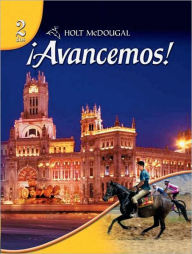
All Solutions
Page 226: Para y piensa
* We should review the information we have been studying so far.
* We can be guided by the **”Nota gramatical”** section on this page **(226).**
* Remember the past tense is used to refer to actions that took place in the past that have already finished, that have nothing to do with the present, and are not related to the moment in which they are being talked about.
In this sentence, we must use the preterite indicative of the verb **”Construir”**, conjugated in the third person plural: **(Ellos)** ***”Construyeron”***.
**Español:** *Los Toltecas **construyeron** templos grandes.*
**English:** The Toltecs built large temples.
* We should review the information we have been studying so far.
* We can be guided by the **”Nota gramatical”** section on this page **(226).**
* Remember the past tense is used to refer to actions that took place in the past that have already finished, that have nothing to do with the present, and are not related to the moment in which they are being talked about.
In this case, we must use the preterite indicative of the verb **”Leer”**, conjugated in the second person plural: **(Ustedes)** ***”Leyeron”.***
**Español:** *Ustedes **leyeron** una leyenda azteca.*
**English:** You **read** an Aztec legend.
* We should review the information we have been studying so far.
* We can be guided by the **”Nota gramatical”** section on this page **(226).**
* Remember the past tense is used to refer to actions that took place in the past that have already finished, that have nothing to do with the present, and are not related to the moment in which they are being talked about.
In this case, we must use the preterite indicative of the verb **”construir”**, conjugated in the third person singular: **”Ella”** (La compañía) ***”Construyó”.***
**Español:** *La compañía **construyó** un rascacielos.*
**English** The company **built** a skyscraper.
The example reads: “We _____ the calendar.“
Haven't found what you were looking for?
Search for samples, answers to your questions and flashcards

